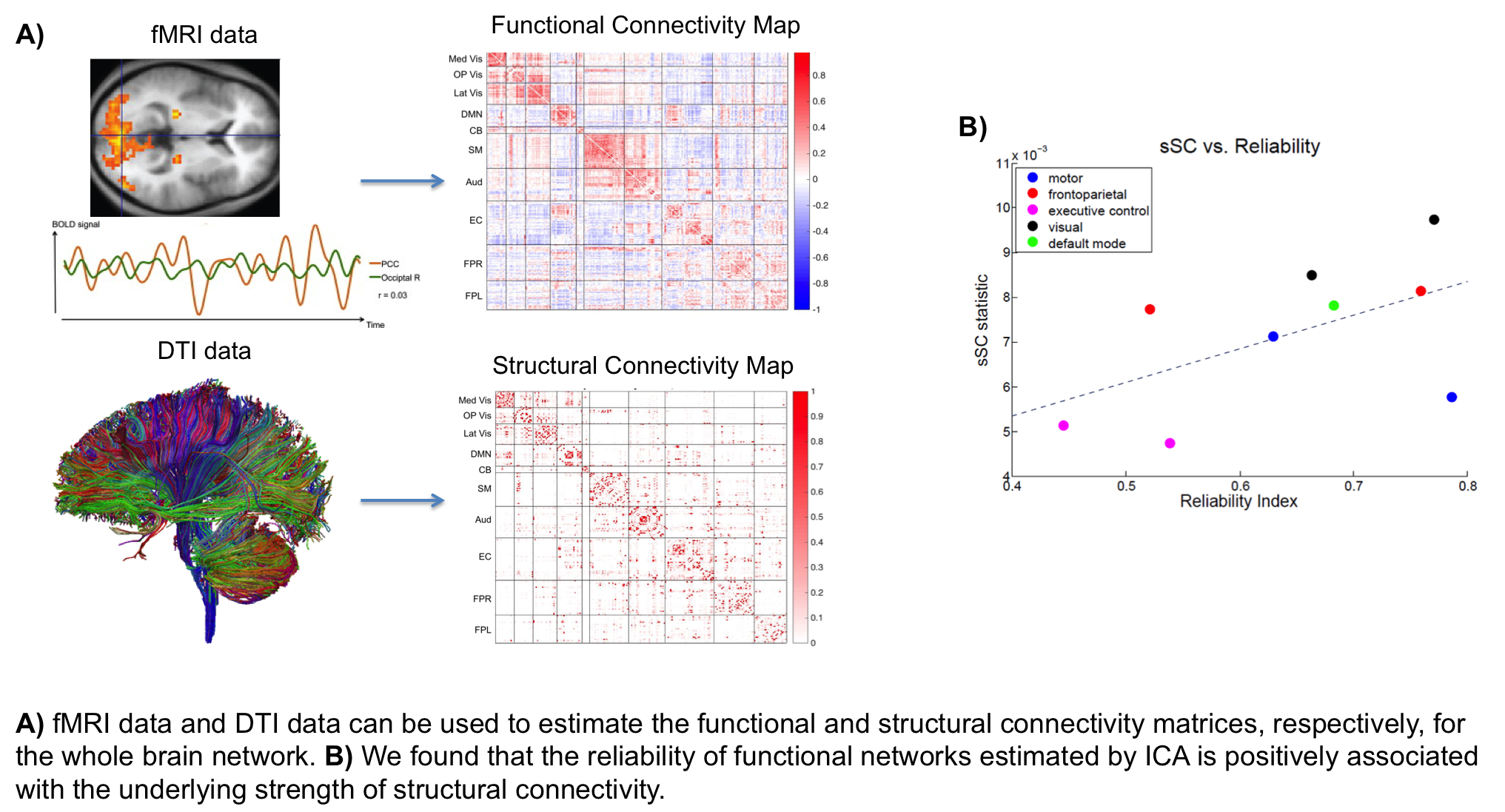INTRODUCTION
We have developed several methods that combine modalities of neuroimaging data, namely fMRI and DTI data, to study the relationship between brain structure and function and to investigate the connectivity disruption pathways that characterize certain brain diseases. Resting-state and task-related brain activity, measured by fMRI, reflects the functional connectivity (FC) or associations between different brain regions. Diffusion tensor imaging (DTI), which enables the reconstruction and probabilistic quantification of major fiber tracts in the brain, provides structural connectivity (SC) information that may improve our understanding of FC. We have developed a method of anatomically-weighted FC (awFC), that implements a hierarchical clustering algorithm to identify FC networks, weighted by the evidence of underlying SC (Bowman et al., 2012). We have also proposed a novel statistical framework for measuring and testing the strength of SC (sSC) underlying FC networks estimated by data-driven methods like ICA. We found that the estimated FC networks with higher sSC also tend to be more reliably identified in ICA. We have also developed a unified Bayesian framework for analyzing FC utilizing the knowledge of associated structural connections, which extends an approach by Patel et al. (2006) that considers only functional data (Xue et al, 2015).


REFERENCES
Bowman, F. D., Zhang, L., Derado, G., & Chen, S. (2012). Determining functional connectivity using fMRI data with diffusion-based anatomical weighting. NeuroImage, 62(3), 1769-1779
Xue, W., Bowman, F. D., Pileggi, A. V., & Mayer, A. R. (2015). A multimodal approach for determining brain networks by jointly modeling functional and structural connectivity. Frontiers in computational neuroscience, 9.
Patel, R. S., Bowman, F. D., & Rilling, J. K. (2006). Determining hierarchical functional networks from auditory stimuli fMRI. Human brain mapping, 27(5), 462-470.